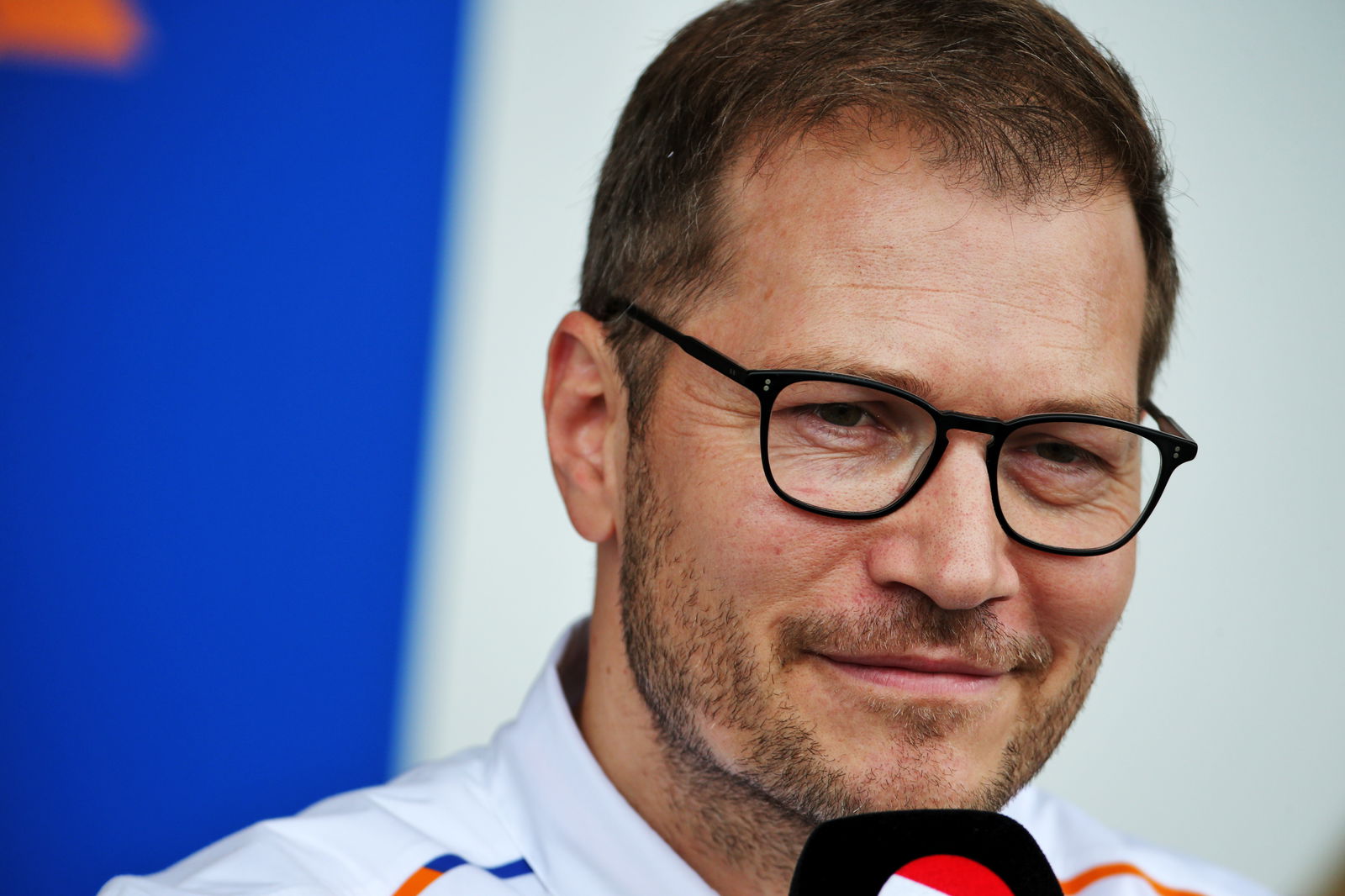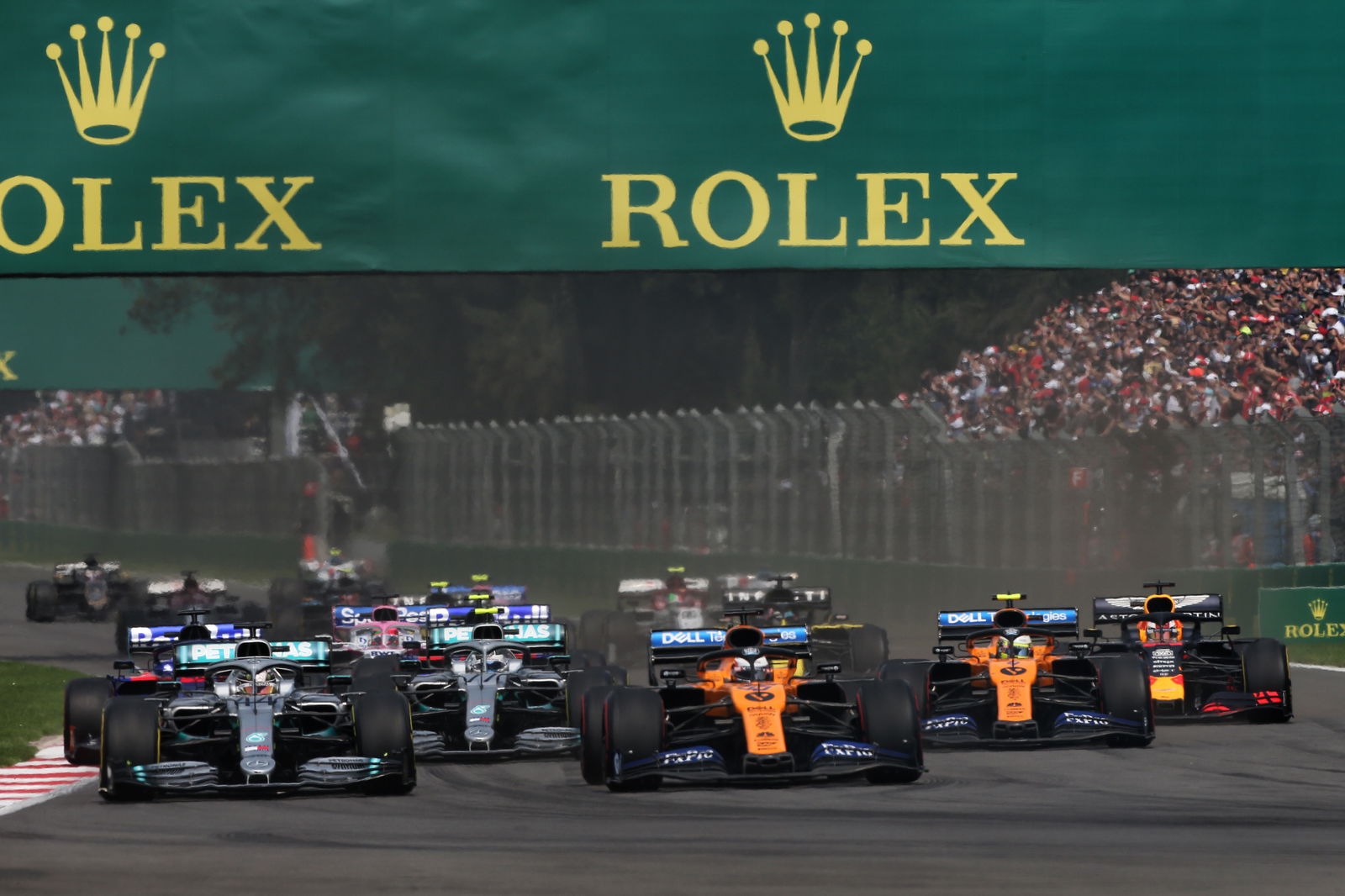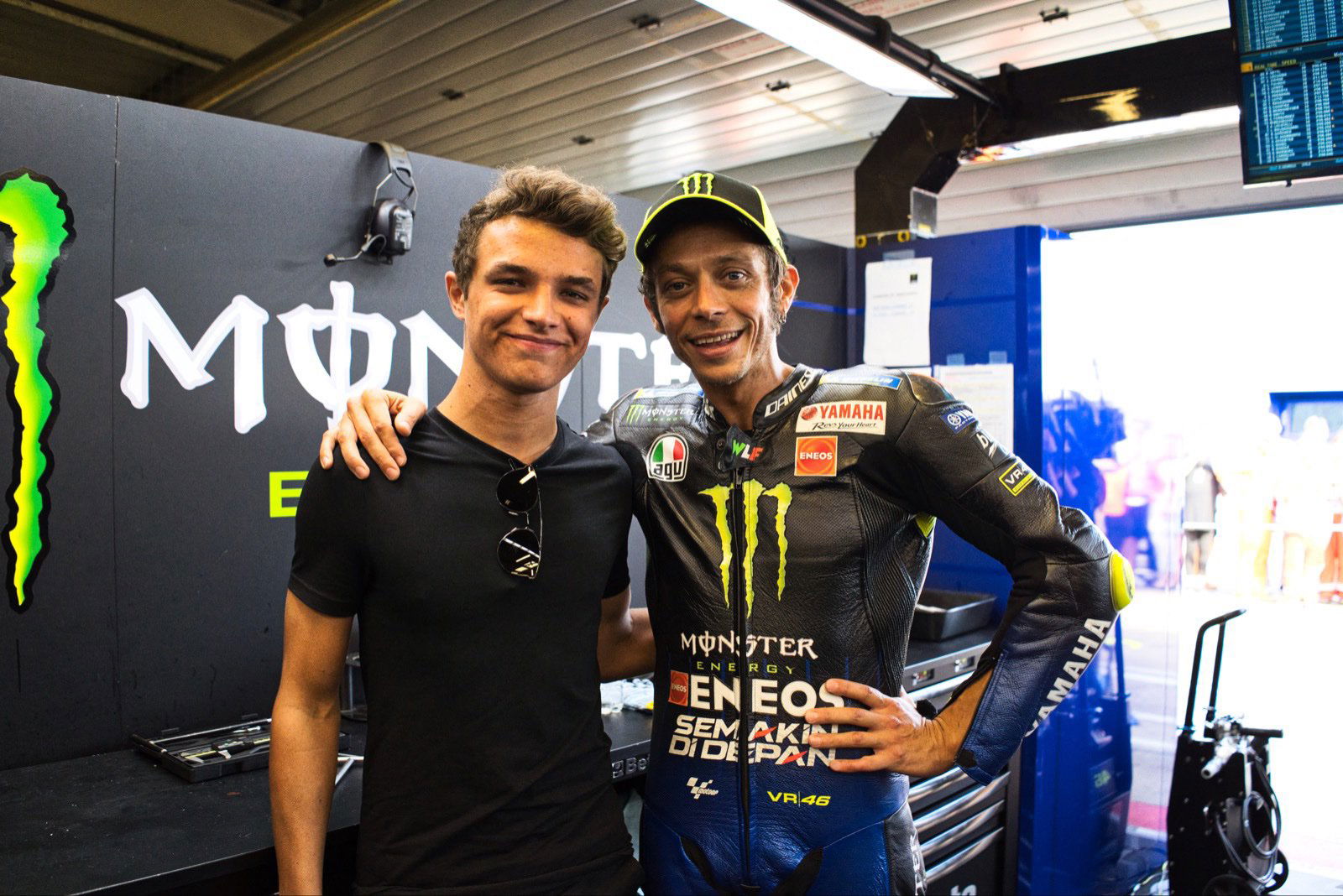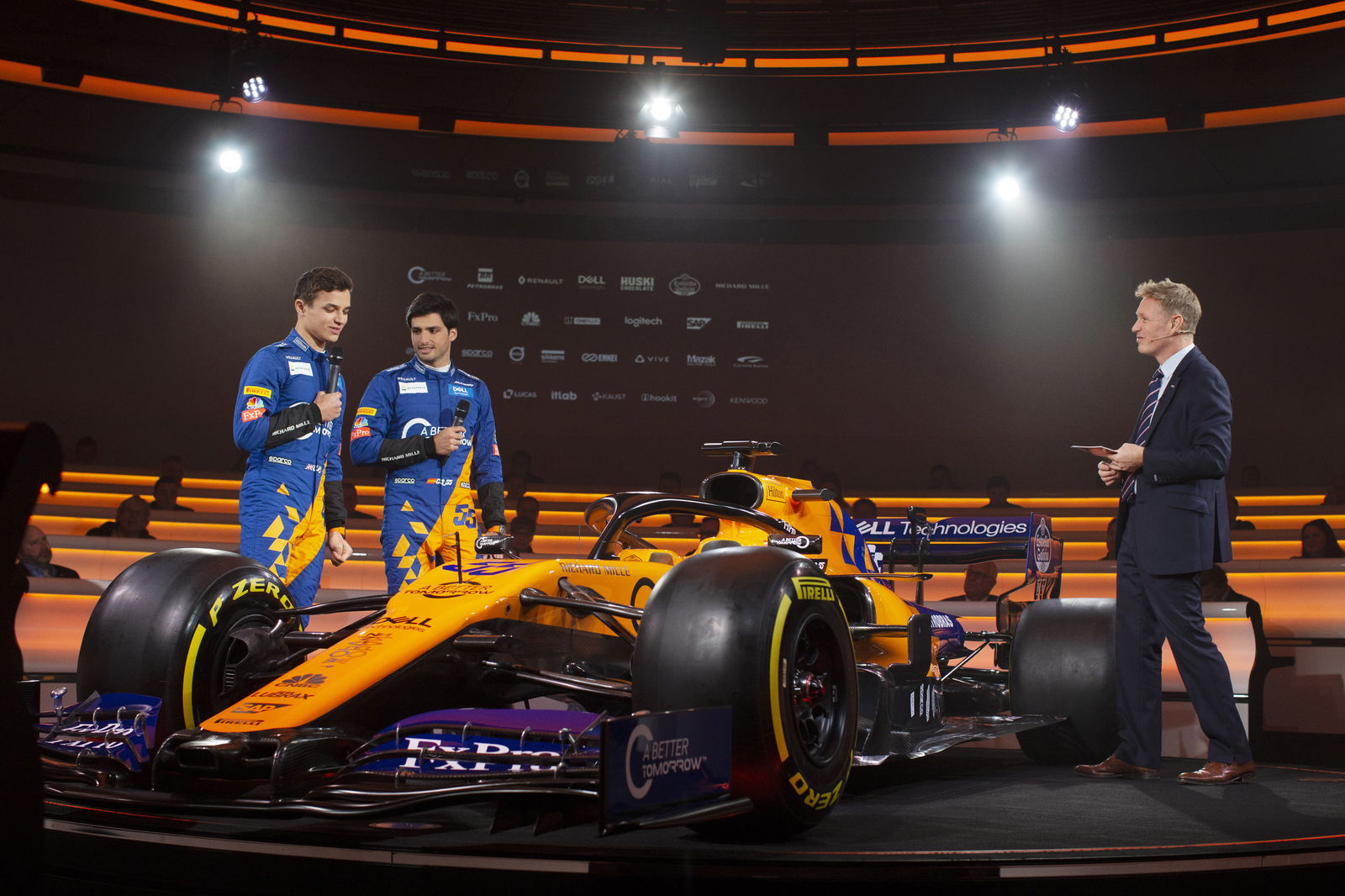Can McLaren really bridge the gap to F1’s top three?
McLaren has ambitions of returning to the top in Formula 1, but how realistic is its aim of challenging the established big three of Mercedes, Ferrari and Red Bull?
The Woking squad’s turnaround in 2019 was remarkable and has sparked renewed hopes of an increased push to return to winning ways in the championship, having endured a barren run stretching back to the 2012 Brazilian Grand Prix.

McLaren has ambitions of returning to the top in Formula 1, but how realistic is its aim of challenging the established big three of Mercedes, Ferrari and Red Bull?
The Woking squad’s turnaround in 2019 was remarkable and has sparked renewed hopes of an increased push to return to winning ways in the championship, having endured a barren run stretching back to the 2012 Brazilian Grand Prix.
McLaren improved on a steady 2018 campaign to convincingly claim ‘best of the rest’ status with fourth place in the constructors’ championship, beating engine supplier Renault in the process.
Spearheaded by new team principal Andreas Seidl, technical boss James Key, and a revised driver line-up consisting of Carlos Sainz Jr and Lando Norris, McLaren regained a huge slice of confidence and competitiveness in what turned out to be a successful year.
McLaren’s MCL34 emerged as the fourth-fastest car during much of the second half of the season and helped Sainz record the team’s first podium finish in five years in Brazil, albeit a direct consequence of Lewis Hamilton’s post-race time penalty.
McLaren struggled through much of the V6 hybrid era being dogged by unreliable and underpowered engines amid a disastrous marriage to Honda between 2015 to 2018.
After dumping Honda in favour of Renault engines for 2018, McLaren moved up to sixth spot in the championship but did not meet its own high expectations after producing a car that was the second-slowest in the field at most races. Following numerous management changes and a new, more grounded approach, the team was able to secure a breakthrough season last year.
To ensure it continues its upward trajectory, McLaren has carried out a further management reshuffle over the winter, with Andrea Stella being promoted to racing director to complete a new three-pronged structure under Seidl.
Stella, McLaren’s former performance director, will work closely alongside technical director Key and production director Piers Thynne to enhance the team’s on track operations during grand prix weekends.
“I have a very strong line-up of people reporting into me,” Seidl explained. “I have full trust in them and their teams in everything they do and therefore they have my full backing.
“It is crucial to empower people, to encourage them to make decisions, to allow them to take risks and to back them up if it goes wrong because I accept that mistakes can happen.
“That’s the only way to get better and to improve as a team.”
McLaren ended 2019 with the biggest year-on-year lap time improvement of any team, completing Abu Dhabi’s Yas Marina circuit over 1.3s quicker than it did in 2018, highlighting the progress of its car development.

Its much-improved car was maximised by Sainz and Norris, both of whom had excellent campaigns, acting as one of the major highlights of McLaren’s rise in 2019. Sainz was one of the standout performers across the year and finished sixth in the drivers’ championship on 96 points, while Norris enjoyed a stellar rookie season to record just shy of a half century of points as he narrowly missed out on a spot in the final top 10 classification.
Despite their competitive nature, Sainz and Norris’ partnership has unexpectedly blossomed throughout the year into something of a bromance, with both drivers continuing to push the team forward. McLaren management have frequently cited how the healthy relationship has been echoed throughout the working environment and helped to inspire the team as a whole.
“I’ve always got on very well with a lot of my teammates – not all of them – since karting,” Norris explained when speaking about his relationship with Sainz at Autosport International.
“Everyone always gives the view that because you’re teammates, you’re always so much against each other and you’re just pure rivals.
“I want to say we’re both kind of looking at the longer game that if we want to achieve what we want to achieve, which is to win races and win championships, the best thing is to work together.
“We wouldn’t have finished P4 in the championship as a team if we didn’t work as well together as well as what we did last year.
“A big part of what we have achieved is because of how we worked together, how we helped each other, how we try and help the team,” he added.
“Because if we were just against each other and we didn’t help each other, we wouldn’t have been P4 in the constructors’, and quite frankly, we wouldn’t be in as good of a position as we are going into this season.
“At the moment, it’s only benefitting us in every way - I hope it continues. I just want to have fun and enjoy it, and he does as well. I think that’s the first time two drivers have been able to show that, and I think that’s why it’s been able to come out so well.”
Seidl hopes the aforementioned changes behind-the-scenes will have a direct influence on the team’s performance on track, though he stressed McLaren will not get carried away by its strong 2019 campaign, acknowledging the team still has improvements to make “everywhere”.

“Our aim is to become the best in this sport again in the future and we know that we are far away from this right now,” he added.
“We won’t get carried away with the good season we’ve just had; we’ll stay humble and continue to respect our competitors.
“We are aware of our weaknesses and will continue working hard with the plan we have in place in order to improve. We are on a journey and you can feel great momentum in the team.
“Our one team approach and the commitment we have from the shareholders means I’m optimistic that we can be successful again, but you need to be realistic about what’s achievable year-by-year.”
But just how much more can McLaren hope to realistically achieve in 2020? With a stable set of regulations in force, it is unlikely the team will be able to improve dramatically on the position it found itself in at the end of 2019. Instead, subtle gains and stability should be the target.
A host of new sporting, technical and financial rules - including a brand new car - should provide McLaren with its best chance yet to challenge the established top three, though every team will find themselves with the same opportunity to capitalise.
2021 will also mark the start of a new engine collaboration for McLaren, with the British outfit switching to Mercedes power units to revive one of the most famous and successful partnerships in F1 history.
McLaren previously ran Mercedes engines from 1995 and split from the German manufacturer at the end of 2014 to rekindle its tie-up with Honda, a move that failed to recapture the former glory days and ended four years later.
The power unit change was one of the key moves driven driven by Seidl following his arrival to Woking in May and highlights another key step in McLaren’s planned revival.
Mercedes has set the benchmark in terms of engine performance throughout the V6 hybrid era, with Ferrari taking until 2019 to finally draw level and appear to edge ahead. McLaren is confident that it will eventually be in a position to fight Mercedes with the same engine, though it does not expect to be in such a position come 2021.
Consolidating its place as the fourth best team ahead of Renault once again this year would underline that 2019 was not just a fluke. It must also balance keeping one eye closely trained on development for the major regulation overhaul coming in 2021, something Seidl described as a "juggling act".
Bridging the gap to the likes of Mercedes, Ferrari and Red Bull will by no means be a short-term project, but if McLaren can maintain its current rise, it will remain on track to meet its goals.



